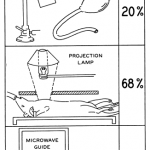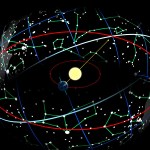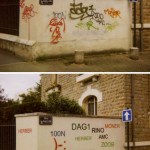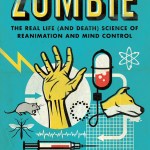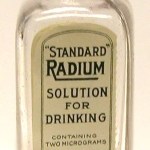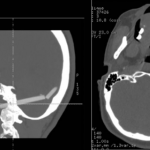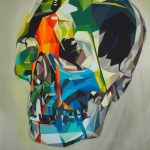
Before James Lovelock conceptualised the world as a single organism (the Gaia hypothesis), he would spend his lab hours freezing hamsters into solid blocks of ice before reanimating them.
Image from The physiology of induced hypothermia: proceedings of a symposium, 28-29 October 1955
Sci-fi and fantasy author Richard Matheson has passed away aged 87, leaving behind a legacy of books, TV and film. Even if you don't recognise his name, you will probably have seen his work on screen. Many of his stories were adapted for film, including I Am Legend, Duel, and A Stir of Echoes, and he wrote perhaps the most famous Twilight Zone episode of all time, Nightmare at 20,000 Feet. I don't normally write memorials but I feel I owe Matheson one because he's responsible for one of my generation's most enduring monsters - the zombie.
Now, zombies were around before Matheson, of course -…
Those still sitting on the fence over whether to buy this month's best pop science debut about zombies can read a review by the kind folks at Arc magazine here, and read an extract from the book in Salon magazine, entitled: Russians Who Raised the Dead:
Bryukhonenko had heard about Kuliabko’s experiments with humans and he was ready to try his own hand at them. He enlisted the help of the experimental surgeon Sergeo I. Spasokukotey, who had helped to engineer the network of blood banks across the Soviet Union. In 1934, showing a similar level of disregard for a person’s self-determination as…
I stumbled across this image by Wikipedia contributor Tauʻolunga whilst researching constellations for a tattoo I'm musing upon. It shows Sun's apparent path across the heavens. I think it would look great as a ring or a bracelet!
Wikimedia Commons
The Weburbanist has a nice spot on French artist Mathieu Tremblin, who explores the boundary between digital and real world art.
Mathieu Tremblin - http://www.demodetouslesjours.eu/
I adored this huge rendering of the Getty Images watermark across a car park wall. As Weburbanist points out, the work sits in some digital/real world uncanny valley:
[Tremblin] spoofs the ubiquity of digital watermarks by photographing a physical equivalent straight-on. We are so used to seeing these as after-print overlays on pictures, it takes conscious effort to realize it is part of the actual landscape…
At long last, my book on zombies is out!
Without doubt the maddest thing I ever did on a whim
You can purchase How to Make a Zombie at all good bookstores in the UK and USA, or online. I'm indebted to a whole host of people for the book ever reaching the light of day, foremost my agent Peter Tallack and my incredible editor at OneWorld, Robin Dennis, and fellow wordnerd Aarathi Prasad for planting the seed in my head.
So yeah, go buy ten copies of it so I can eat tonight.
Move over, Rotwang: this femme-domme-themed mad scientist magazine by artist Sardax got a chuckle out of me. Why should mad scientists always be male, pale and stale?
Credit: Sardax.com
Hat tip Mika Tan
In the age of life-casting offered by Google Glass, you'll need to pick your friends wisely.
As the first of Google's goggles are dispatched, we're starting to see serious conversations arise about the implications of always-on feeds beaming every moment onto the cloud. I've seen a few articles expressing alarm at the idea we'll be under constant surveillance by the people around us, and the necessary etiquette frameworks that will need to be hashed out as this kind of device becomes more commonplace. Seattle's 5 Point Cafe became the first to ban the goggles, although this was more a savvy…
When I was pitching my book back in 2010, quite a few publishers said that vampires were hot, and zombies were not.
Muahahahaha.
(How to Make a Zombie is out in June from OneWorld)
There's been quite a lot of coverage in the press about Google's street-mapping of the tsunami-damaged Fukushima district in Japan, still derelict two years since the disaster.
I think this is interesting for a couple of reasons, The first is the use of Google's Street View as a journalism. The mayor of Namie invited the cameras in an effort to stop the world forgetting about the catastrophe. As far as I know, this is the first time street view has been used to document an area with this kind of subtext. In the future, might we demand more from news teams than carefully composed photographs…
Source: Oak Ridge Associated Universities
Moscow police officers have detained a schoolteacher after 14 kg of radioactive material was discovered in his garage.
The police cited the man as saying that he had used the substances to “irradiate” a friend who wanted to become immortal.
He reportedly said the friend had even traveled to the site of the 1986 Chernobyl nuclear disaster “to expose himself to radiation and become immortal.”
The radioactive material was apparently collected by the teacher from known burial sites and other "special places".
Moscow Police Seize 14 Kg of Radioactive…
A couple of surprising images from the medical literature - two patients with chopsticks buried deep in their skulls. The first belongs to a 38-year-old woman who was dancing at a wedding while eating with chopsticks. Someone accidentally pushed into her from behind, causing the woman to fall forward onto one of the chopsticks. The wooden skewer went straight through the back of her mouth, into the skull and snapped against the back of it, coming so close to the carotid artery that a separate image shows the major vessel pushed to one side(!). Despite some length of it still jutting out of…
Last month I visited Amsterdam to take part in Sonic Acts, an art festival with a keen love of the scientific. Amid music woven out of the electromagnetic ether and artists painting geomagnetic storms, I took part in a panel convened by Arc editor Simon Ings to discuss the ‘futures of science and science fiction’.
Not being a scientist or a science fiction author, I opted to look at how one influenced the other. The theme of the festival was the dark universe - all that lies unknown and obscured. During the age of empires, Dutch cartographers were regarded as the best in the world, their…
Written over a year ago, but only just coming to my attention, is Google engineer Jean-Baptiste Quéru's wonderful essay describing how no single person alive understands entirely what's going on in the machines we use daily.
You just pressed a key on your keyboard.
Simple, isn't it?
What just actually happened?
Well, when you know about bit about how input peripherals work, it's not quite that simple. You've just put into play a power regulator, a debouncer, an input multiplexer, a USB device stack, a USB hub stack, all of that implemented in a single chip. That chip is built around thinly…
From the annals of dystopian architecture: the New York Times reports on a trend in US communities to build nominal parks to drive out sex offenders. The parks are often too small to be of any use to local children - instead, they exist to force out nearby paroled sex offenders, who are required to live no less than 2,000 feet from any school or public park. As the article points out, this practice actually makes neighbourhoods more dangerous, as it drives rapists and paedophiles out of secure accommodation and into the street, where authorities have a harder time tracking them.…
This is an adaptation of my shortlisted entry to the 2013 Future of Money Design Award. The brief was to design a crime that would exist in a cashless economy. The judging took place at the Consult Hyperion Tomorrow's Transaction conference. I didn't win, but I enjoyed working on the idea and it was nice to make it to the final three, so I thought I'd share it here. Note that this is a work of fiction, although it contains many true elements.
EDIT: Since writing this, a lawsuit has been filed against a Pennsylvania McDonald's restaurant that insisted on paying employees via a fee-laden debit…
You had your chance.
A while back I chanced across a post by Carla Sinclair at BoingBoing, recounting a recent TED talk that proposed reviving extinct species:
Stewart Brand began his TED talk today with the statement, “Biotechnology is about to liberate conservation.” Before I had a chance to process what that meant, he went on to list a number of birds and mammals that have become extinct in the last few centuries, including the passenger pigeon, which was killed off by hunters in the 1930s. For a moment my mood plunged, as it always does with conversations of human-caused animal…
So last summer I ran a quiz at the Secret Garden Party festival in Cambridgeshire. For the picture round, teams had to submit their best drawing of hearthrob scientist Professor Brian Cox. Here are some of the entries.
Like Samson
"I have a drem"
Pie chart face: 50% smile
I think they got confused and drew Brian May, the other rockstar physicist.
Shirtless!
Just beautiful.
Credit: Wikimedia Commons
A whimsical thing: the Oxford Electric Bell, pictured here, is a battery-powered device that has been running (almost!) continuously since it was built in 1840. A clapper on a pendulum rocks from side to side between two metal spheres, driven by electrostatic forces. The bell is powered by a pair of mysterious batteries, the composition of which is unknown.
However, because it sits behind two layers of protective glass, the bell is inaudible.
I'm rather taken by Tim Biskup's work, especially his skulls. I think this design appeared on a limited edition Poketo wallet (the only type I buy) some years back, but I missed out on getting one. For shame.
Artist:: Tim Biskup
For more of his latest work, see the Design Collector blog.
